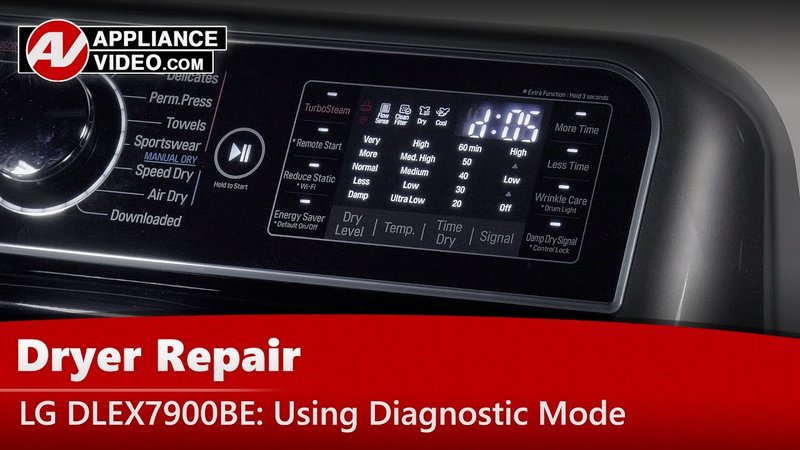
Imagine your dryer as a little climate controller for your clothes. The thermistor is like the thermostat in your home, ensuring things don’t get too hot or too cold. If your home thermostat isn’t working, you might experience a chill or a sweat—neither of which is ideal. Similarly, when the thermistor in your dryer isn’t doing its job, your dryer can misbehave and trigger the E1 error code. Let’s unravel when you should dive into fixing it yourself—and when it’s time to call in the cavalry, also known as a professional technician.
Understanding the E1 Error Code
The E1 error code is LG’s way of telling you that your dryer’s thermistor isn’t communicating properly with the control board. Think of the thermistor as the dryer’s way of sensing how hot things are getting inside—a bit like how you might stick a hand into a warm bath to check the temperature. If it can’t relay this information correctly, the dryer gets confused and displays an error code.
Why does this happen? Well, behind the scenes, the thermistor works with the heating element to ensure clothes dry efficiently and safely. If there’s a break in communication, the dryer might think it’s done before it’s actually finished the job, or—worse—it might run too hot and risk overheating. This kind of error can occur if the thermistor is faulty, has a loose wire connection, or if the control board is acting up.
If you encounter this code, you might be tempted to hit a few buttons in frustration. But hold on! The E1 error isn’t just a bother—it’s actually a helpful hint. It’s telling you that your dryer needs a little TLC, either through a minor DIY check or some expert assistance. Knowing when to troubleshoot yourself and when to call a pro can save you time, stress, and money.
When to Troubleshoot on Your Own
Here’s the deal: before you panic and reach for the phone, there are a few things you can try yourself. First, consider the possibility of a simple power glitch. Just like how rebooting your computer can solve many tech woes, unplugging your dryer for a few minutes and plugging it back in can sometimes reset the system and clear the error. It’s a quick and simple move that might just do the trick.
If the error persists, take a closer look at the dryer’s venting. A blocked vent can cause overheating, which may lead the dryer to mistakenly think the thermistor is malfunctioning. Cleaning out lint from the vent and ensuring proper airflow might resolve the issue. Imagine a blocked straw when sipping your favorite drink—it’s frustrating, right? Proper airflow is essential for your dryer too.
Should these steps not solve the problem, it might be time to check the thermistor yourself if you’re comfortable doing so. Typically, you’ll find it attached near the blower housing. If you’re up for a little DIY, ensure all connections are secure, or consider consulting your dryer’s manual for guidance on checking the thermistor’s resistance with a multimeter. But remember, safety first: always unplug your dryer before attempting any repairs.
When to Call a Technician
You’ve tried resetting the dryer, cleaning out any blockages, and even taken a peek at the thermistor, but that pesky E1 error is still there. When you’ve exhausted these options, it’s a strong indicator that professional help is needed. A certified LG technician will have the expertise to delve deeper into complex issues that might be beyond a simple DIY fix.
Technicians have the tools and knowledge to diagnose whether the thermistor itself is faulty, if there’s a wiring issue, or if the control board is malfunctioning. It’s a bit like calling a mechanic when your car’s making a weird noise. You could keep ignoring it, but chances are the problem won’t just disappear. The smart move is often to get a professional involved to avoid potential damage or safety hazards.
Moreover, if your dryer is under warranty—don’t void it by tinkering around too much. A technician can ensure that repairs are done correctly and uphold the warranty. They can also provide advice on how to prevent future issues, which is invaluable for extending the life of your appliance.
Preventing Future Error Codes
We all hope these error codes don’t make a reappearance, right? Maintaining your dryer is key to minimizing disruptions. Regular maintenance keeps it purring like a kitten and helps avoid unexpected error codes. So what can you do to keep it running smoothly?
First, routinely clean the lint filter after each cycle. It’s a small step, but it significantly enhances the dryer’s performance and prevents overheating. It’s like keeping your workspace tidy to avoid clutter piling up—it just makes everything run more smoothly! Additionally, schedule periodic cleaning of the vent system to prevent any buildup that could cause airflow issues.
Also, be mindful of how you load your dryer. Overloading can strain the thermistor and other components, leading to errors. It’s like trying to stuff too many clothes in a suitcase—you’re just asking for trouble. Distribute the clothes evenly to allow for proper airflow and efficient drying.
Finally, consider having your dryer serviced annually by a professional. They can catch minor issues before they become major headaches. Remember, an ounce of prevention is worth a pound of cure, especially when it comes to keeping your dryer—and laundry days—running smoothly.
In conclusion, while the E1 error code might seem daunting at first, understanding what it means and how to respond can save you a world of hassle. Whether you’re tackling it with a DIY approach or calling in a technician, now you’re armed with the knowledge to keep your LG dryer in top shape.